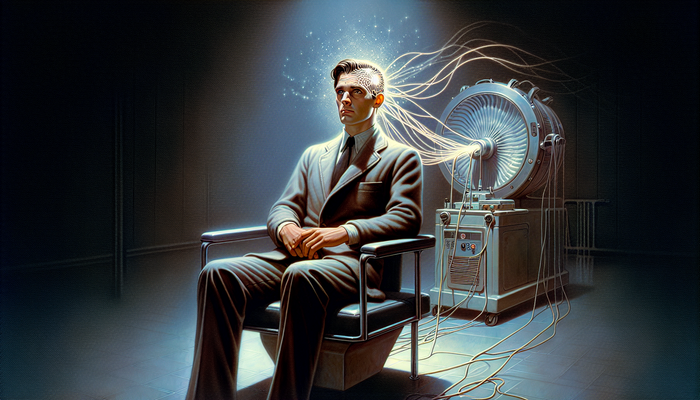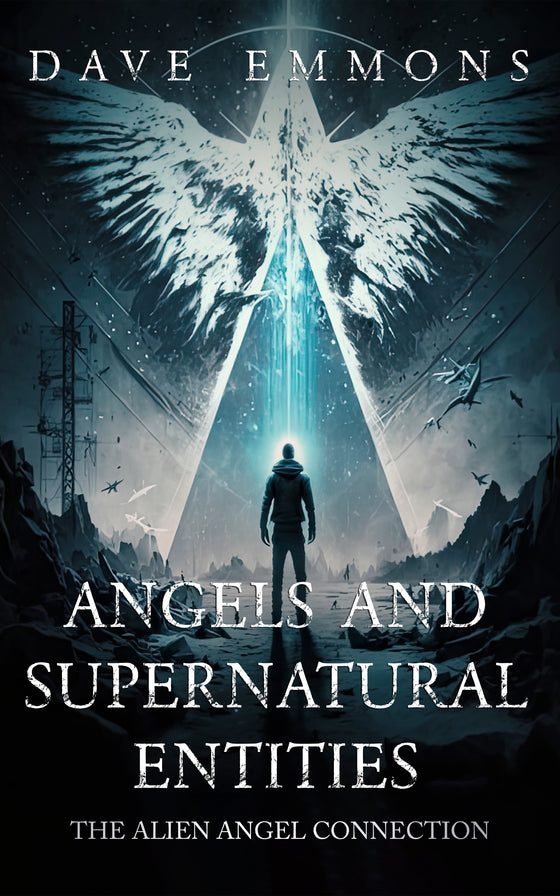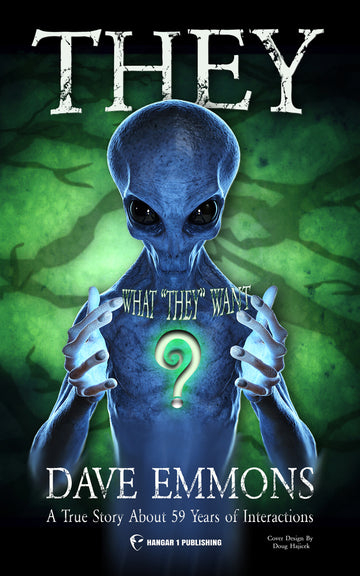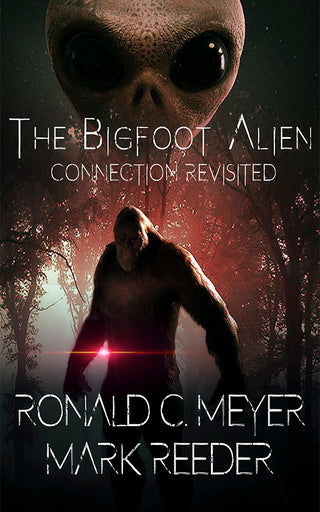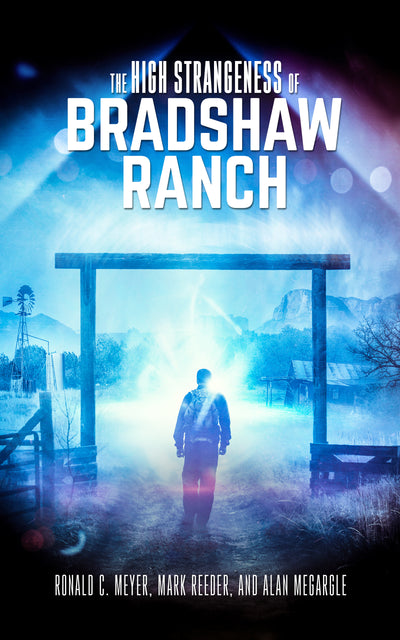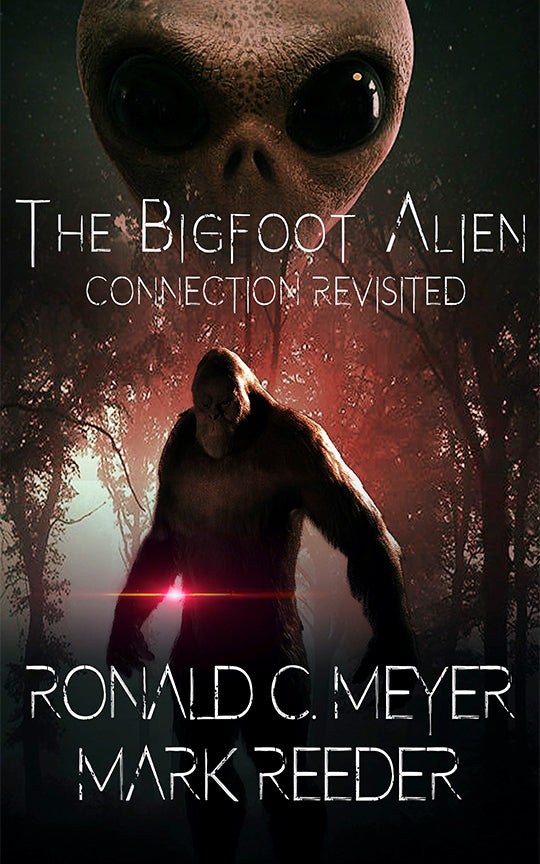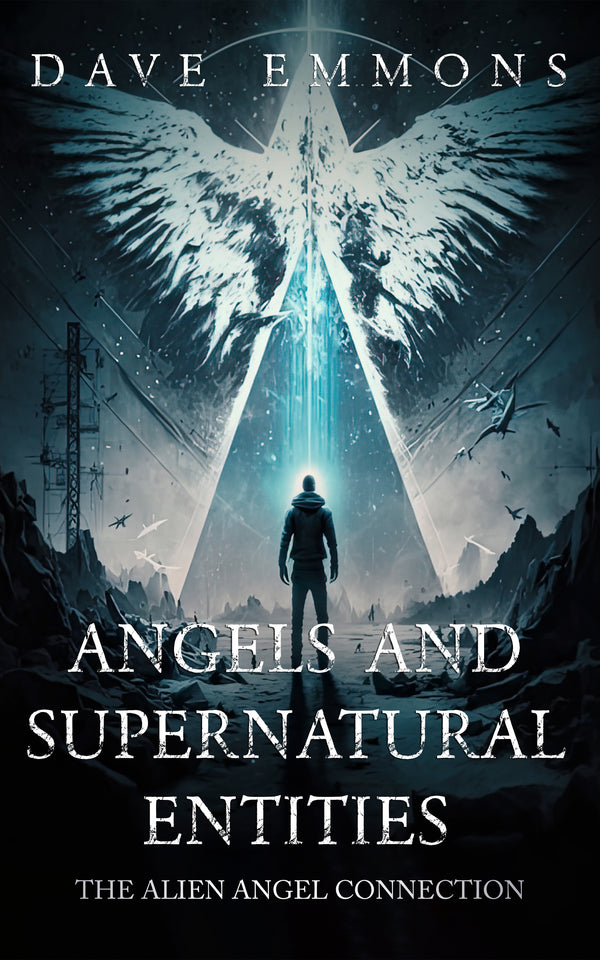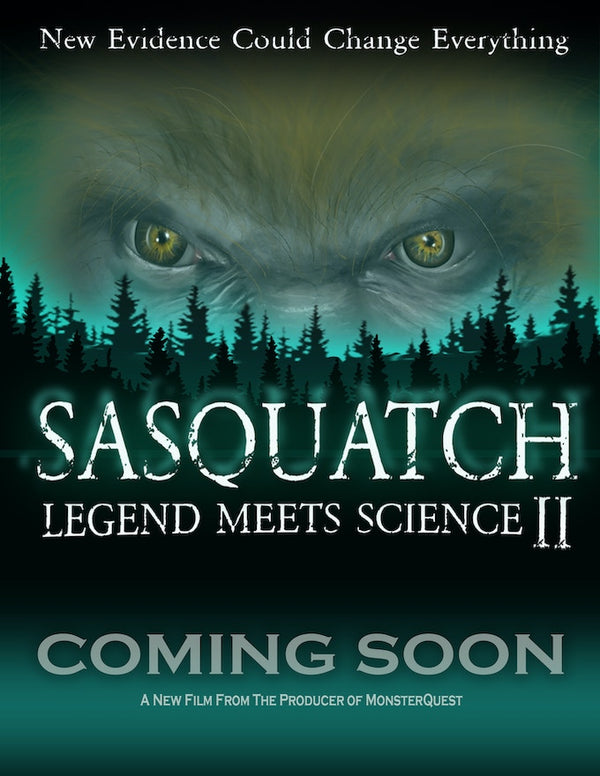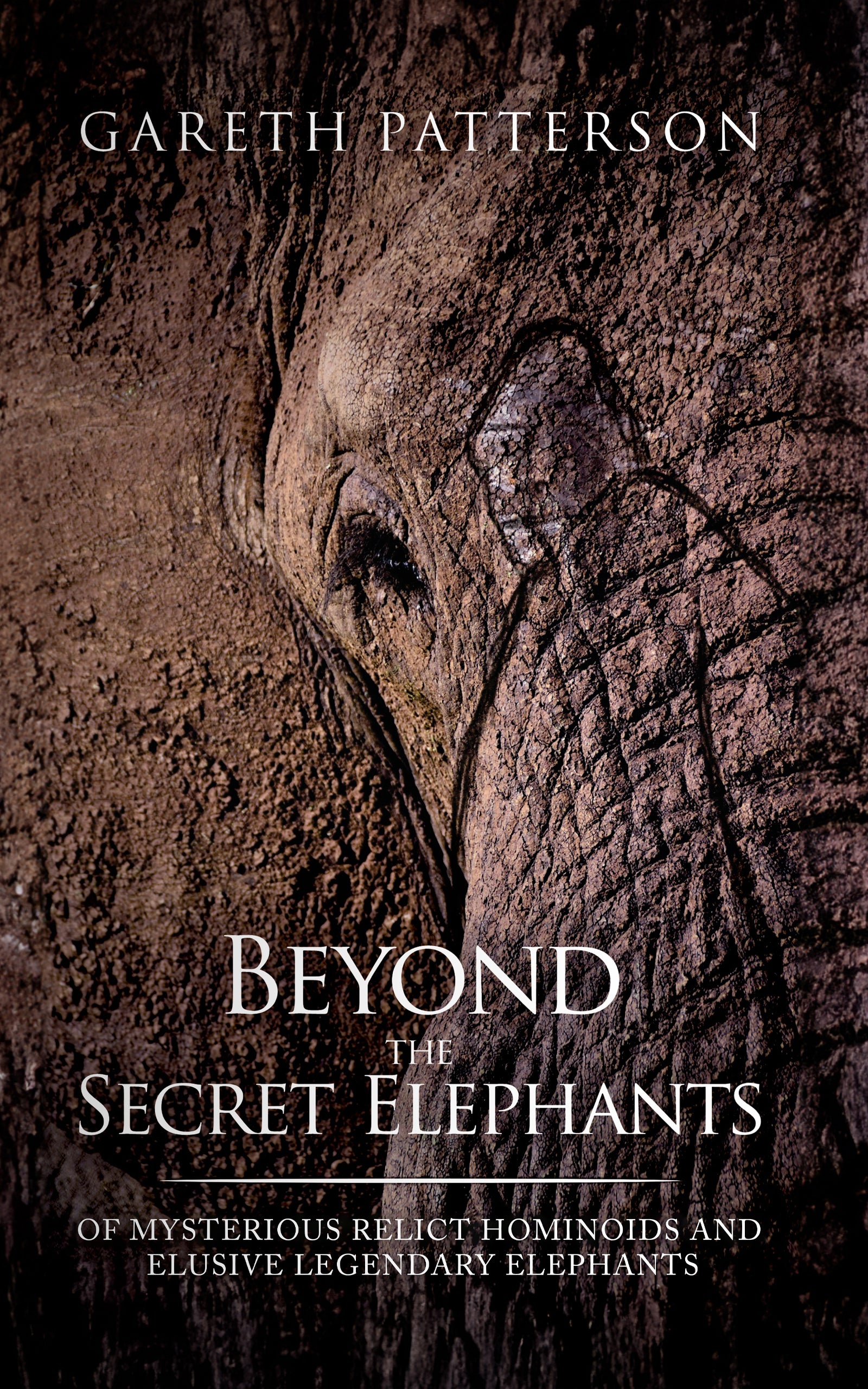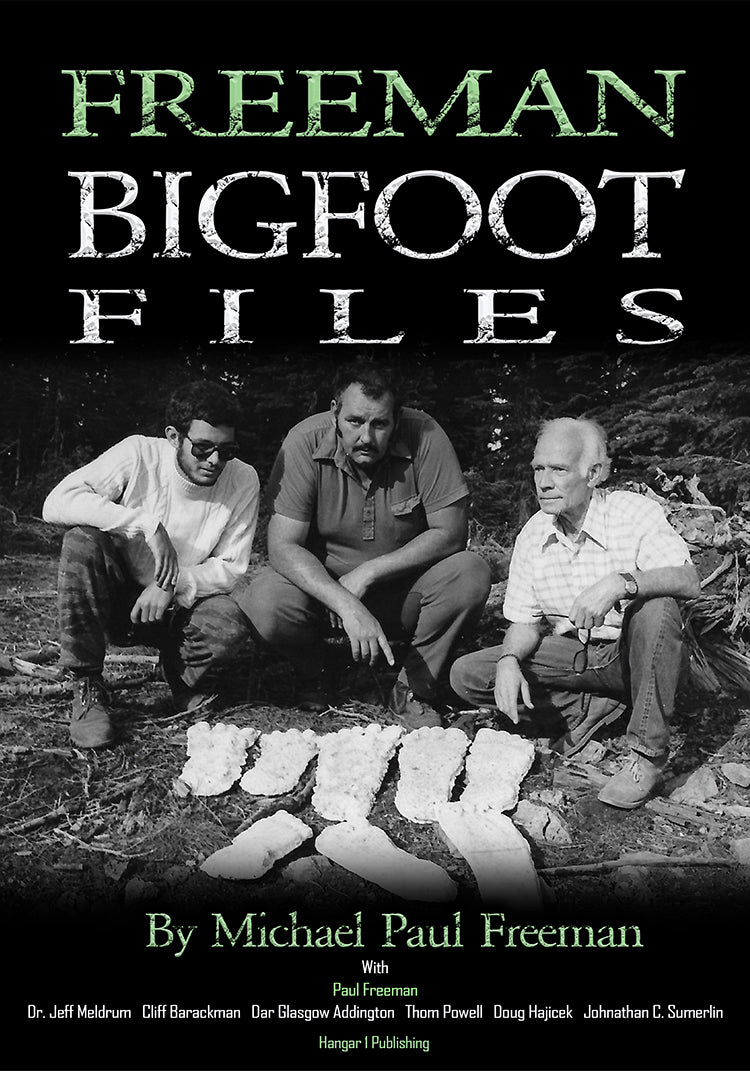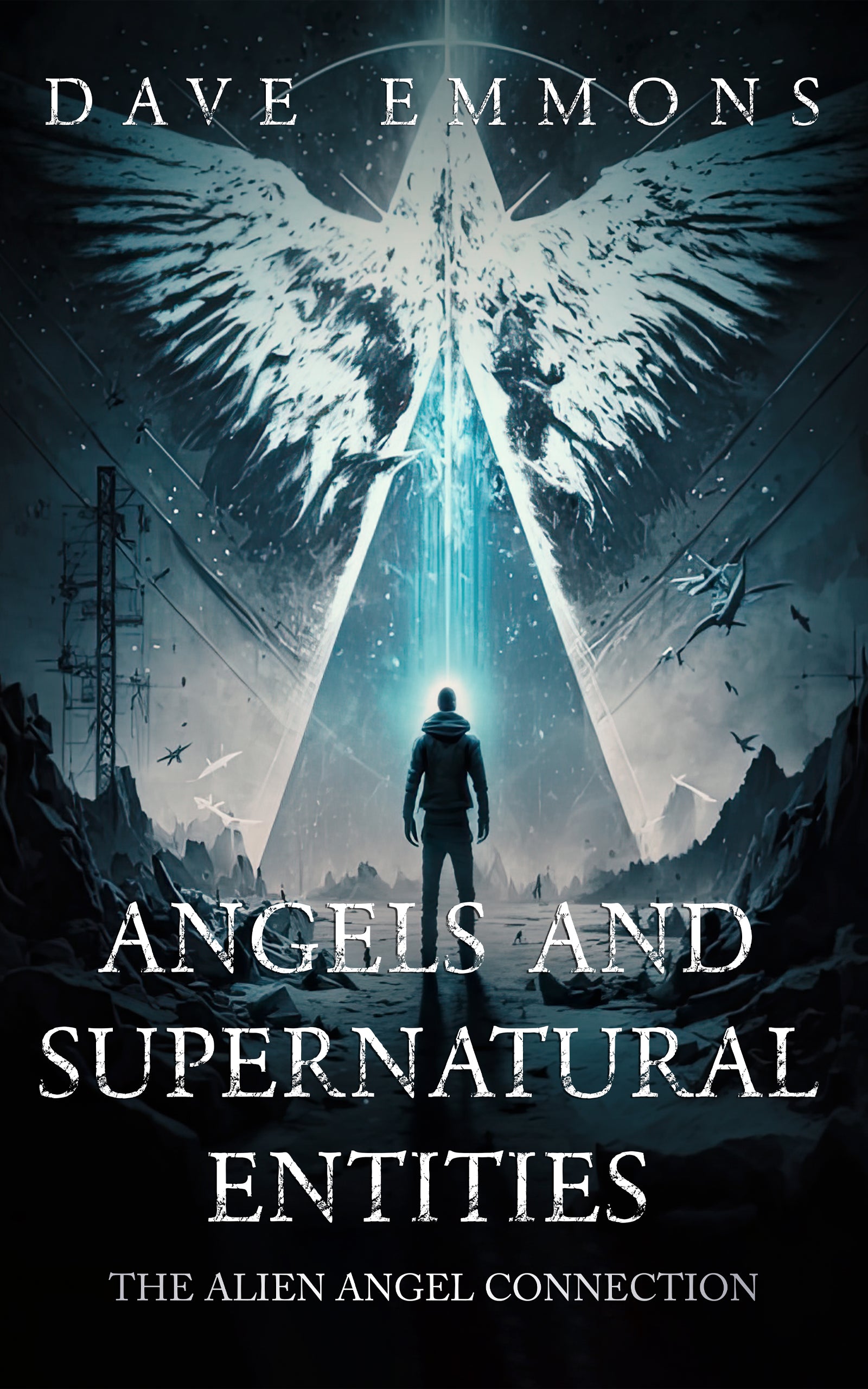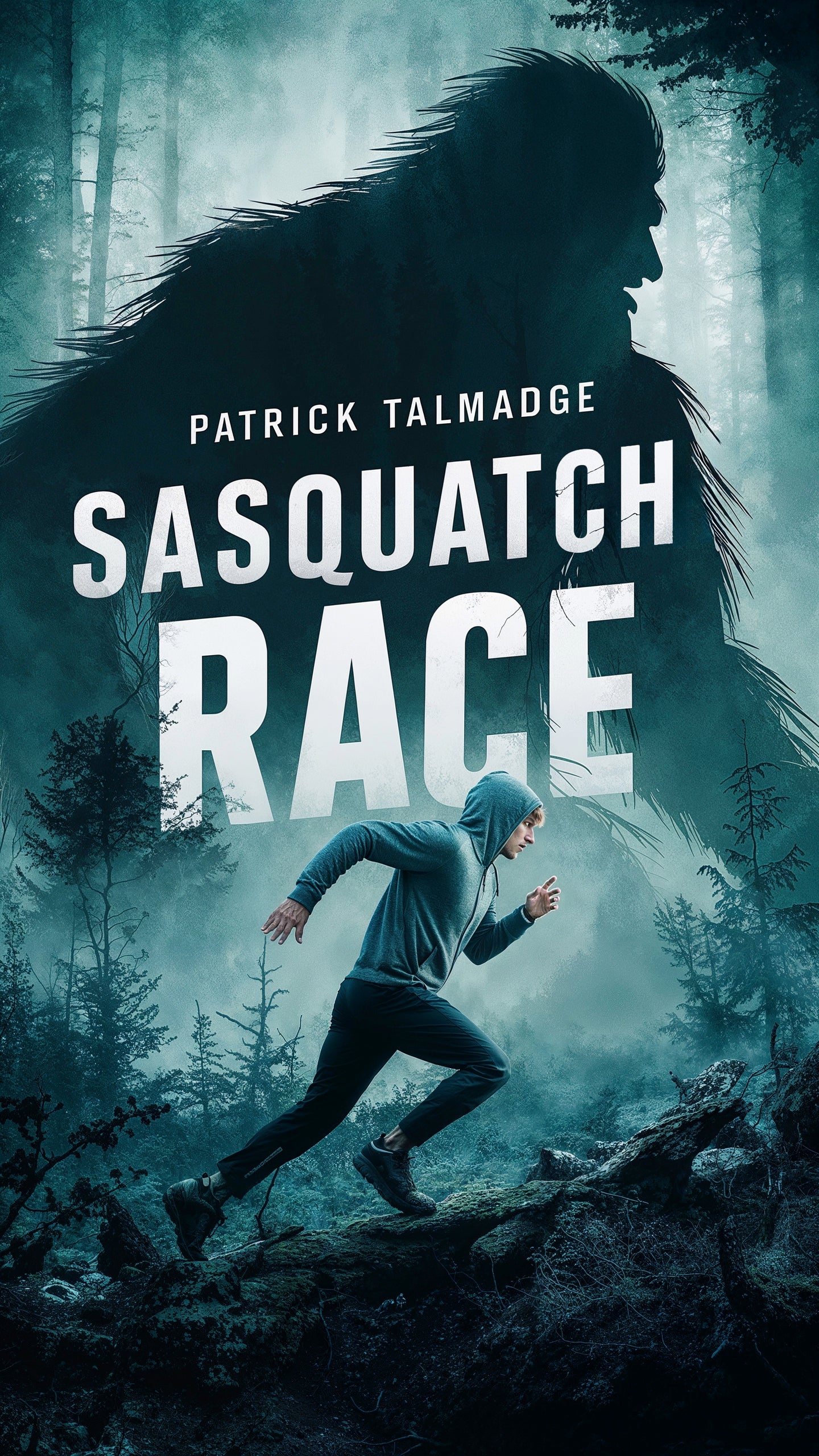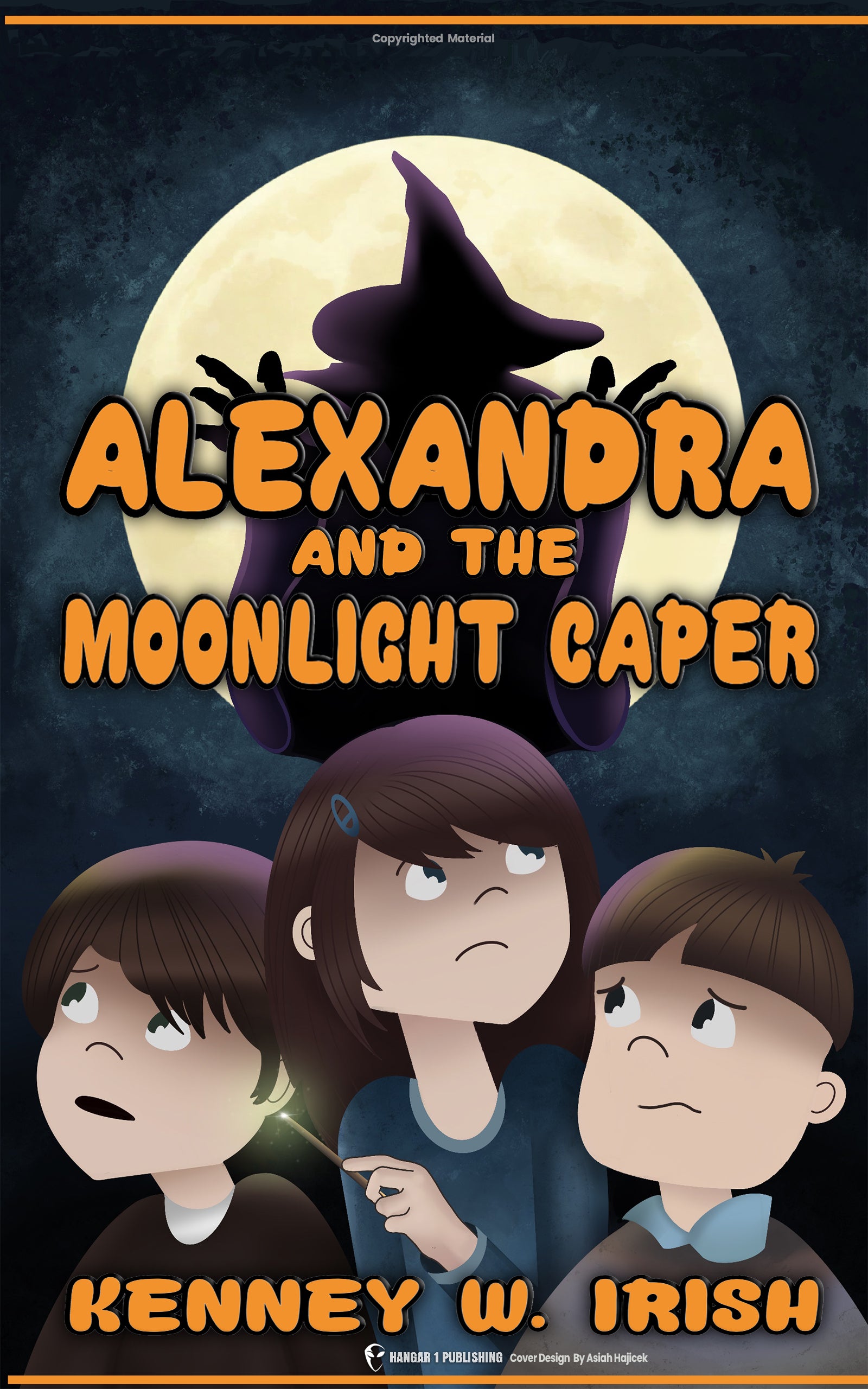Decoding the John Lear Files

By Vanessa Torres, Ufologist
: A Maverick Pilot's Dive into the Alien Abyss and Government Secrets
Introduction: The Maverick, the Mystery, and the Files
Picture this: a man who holds nearly every pilot certificate the FAA can issue, who shattered world speed records in the iconic jet bearing his family name, who claims to have flown secret missions for the CIA across the globe. This same man, John Lear, spent the latter part of his life utterly convinced that the United States government was colluding with hostile aliens, hiding crashed spacecraft, and allowing horrific experiments on abducted citizens. It’s a paradox that sits at the heart of the phenomenon known as the "John Lear Files."
These aren't official government case files tucked away in a dusty archive. No, the "John Lear Files" represent the sprawling, often contradictory, and deeply controversial collection of claims, theories, and alleged research that Lear himself broadcast to the world over decades. It’s a narrative assembled from interviews, online bulletin board posts, radio appearances, and public statements – a personal dossier on what he believed to be humanity's darkest secret.
His background is undeniable. John Olsen Lear, born into aviation royalty as the son of Learjet founder Bill Lear and Moya Olsen Lear, wasn't just adjacent to the world of high-stakes flight and potential government secrets; he was immersed in it. His unparalleled piloting credentials and whispers of CIA involvement lent an air of insider knowledge to his pronouncements, making people who might otherwise scoff at tales of "little gray men" pause and listen.
Our objective here is to decode this complex tapestry. We'll trace the threads of the "John Lear Files" from their origins, examine the core assertions about alien treaties and government deception, explore the specific, often terrifying stories he told, and assess the lasting impact these narratives have had on UFO lore. How did a man so demonstrably skilled in navigating the physical world become a primary architect of some of the most extraordinary narratives about otherworldly intrusions and government complicity? What can we truly glean from the strange legacy contained within the "John Lear Files"?
From Cockpit to Conspiracy: The Genesis of John Lear's UFO Obsession
Before John Lear became a fixture in the UFO conspiracy circuit, he was, quite simply, one of the most accomplished pilots of his generation. His life seemed destined for the skies. Born December 3, 1942, the son of Bill and Moya Lear, his early life was marked by privilege and the hum of engines. Educated at Switzerland's prestigious Institut Le Rosey and Wichita State University, his passion for flying ignited early. He took his first flight at 14, flew solo at 16, and by 1960 was already working for his father's company as a pilot and PR representative.
His path wasn't without turbulence. A severe crash during stunt flying in 1962 required extensive recovery, and his relationship with his famous father became estranged, culminating in John being largely excluded from Bill Lear's will upon his death in 1979 (though John's children were provided for). Yet, his aviation career soared. He testified before the Civil Aeronautics Board after a fatal LearJet crash in 1965. Then, between May 23 and 26, 1966, he co-piloted a LearJet Model 24 on a globe-circling flight that broke 18 international aviation records, covering 22,000 miles in just over 50 hours. We even have tangible evidence of this feat, thanks to the William Lear Archive, which includes John's own handwritten notes and original photographs from that record-setting journey. That same year, his piloting prowess caught the attention of the rock band The Byrds; a flight he gave them inspired their track "2-4-2 Foxtrot (The Lear Jet Song)," which even samples Lear's voice from the radio communications. Another dramatic incident occurred in 1968 when thick San Francisco fog nearly forced an emergency landing; traffic was cleared from the Golden Gate Bridge before Air Force personnel guided him safely into Hamilton AFB.
Perhaps most significantly, Lear claimed to have flown cargo planes for the CIA between 1967 and 1983, primarily during the Vietnam era. While the exact nature of these flights often involved seemingly mundane cargo like livestock or rice (alongside transporting personnel and, allegedly, supporting allied drug lords), this period placed him squarely within the orbit of covert operations and government secrecy – experience that would later bolster his claims of insider knowledge. In a remarkably candid 2004 talk to fellow pilots, Lear listed flying for Air America (a known CIA proprietary company) delivering supplies in Laos and ferrying FAC planes to Vietnam, alongside numerous other contract flying jobs across conflict zones like Cambodia, Beirut, and even an alleged CIA operation flying arms from Budapest to Mogadishu after the Camp David accords. He recounted being shot down in Laos, racing a B-26 bomber at Reno, and flying charter Lears for aviation legends like Clay Lacy. His logbook chronicled an almost unbelievable variety of aircraft—from the Learjet series to Boeing 707s, DC-8s, L-1011s, Convairs, even a Ford Trimotor and a B-26. By his own count, he held type ratings in dozens of aircraft and possessed nearly every airman certificate issued by the FAA – ATP, Flight Instructor across multiple categories, Flight Navigator, Flight Engineer, Senior Parachute Rigger, Control Tower Operator, A&P mechanic, Ground Instructor, and Aircraft Dispatcher.
So, what turned this decorated, if admittedly unconventional, aviator towards UFOs? By his own account, the switch flipped in the summer of 1986. He recounted a conversation with a friend retiring from the Air Force who had been stationed at Bentwaters AFB near London. This friend relayed an eyewitness account of a UFO landing there around 1980, where three small aliens allegedly exited the craft and approached the Wing Commander, General Gordon Williams. Lear said, "I don't care if you believe me or not, it landed." This single, secondhand story, according to Lear, was the catalyst. It transformed him from a man interested in unidentified flying objects (he mentioned his father and brother had sightings) into an obsessive researcher determined to expose what he saw as a forty-year cover-up. His history of operating within the worlds of high-performance aviation and alleged covert activities gave him a unique platform, lending his subsequent, far more extreme claims a veneer of credibility that set him apart from many others in the field.
The "Horrible Truth": Unpacking Lear's Core Alien-Government Narrative
At the very center of the John Lear Files lies a disturbing assertion he termed the "horrible truth." In his widely circulated statement, revised finally in August 1988, Lear declared bluntly: "The United States Government has been in business with little gray extraterrestrials for about 20 years." This wasn't a vague suspicion; it was presented as a documented, clandestine relationship born out of fear and desperation.
Lear argued that this unholy alliance began with the best intentions, forged in the aftermath of alleged flying saucer crashes in the late 1940s—specifically mentioning Roswell, Aztec, New Mexico, and another near Laredo, Texas. Picture the scene he painted: government and military leaders, still reeling from the public panic induced by Orson Welles' 1938 "War of the Worlds" broadcast, are suddenly confronted with the actual wreckage of advanced craft and the "frightening looking little creatures" within – beings with enormous eyes, reptilian skin, and claw-like fingers. Faced with technology utterly beyond their comprehension (no pistons, no vacuum tubes, just inscrutable alien engineering) and feeling overwhelmingly helpless, Lear claimed they instigated a "total, thorough and sweeping cover-up, to include the use of 'deadly force'."
The linchpin of this secret history, according to Lear, was a deal struck between a shadowy group called MJ-12 (Majestic 12) and these alien visitors, whom he called EBEs (Extraterrestrial Biological Entities, a term he attributed to original MJ-12 member Detley Bronk). Lear described MJ-12 as an elite committee of twelve top military and scientific minds, initially established by President Truman in 1947 to handle the UFO secret. The alleged bargain was stark: the EBEs would provide advanced "technology" to the U.S., and in return, the government agreed to "ignore" the ongoing alien abductions of citizens and actively suppress information about the bizarre phenomenon of cattle mutilations. The EBEs, Lear claimed, suavely assured MJ-12 that the abductions, typically lasting about two hours, were merely part of their "ongoing monitoring of developing civilizations."
But this is where Lear's narrative takes its darkest turn, into what he called the "Grand Deception." He asserted that sometime between 1979 and 1983, MJ-12 made horrifying discoveries. The abductions weren't benign monitoring; thousands more people were being taken than were reported on the official lists exchanged with the aliens. Worse, Lear alleged that "some, not all, but some of the nation's missing children had been used for secretions and other parts required by the aliens." Furthermore, he claimed individuals deemed a threat to the aliens' activities were being terminated. This supposed revelation, Lear contended, plunged MJ-12 into "utter confusion and panic." They had, in his view, made a pact with the devil, a Faustian bargain with entities far more advanced and malevolent than they had ever imagined, and the consequences were catastrophic. This shocking narrative of a secret treaty gone terribly wrong became the foundation upon which much of the John Lear Files rested.
The Alien Mosaic: Species, Motives, and the Abduction Phenomenon
John Lear didn't just claim aliens existed; he offered a surprisingly diverse, and frankly terrifying, catalog of otherworldly visitors. His "files" assert the presence of at least 70 distinct extraterrestrial species interacting with Earth, perhaps many more. He provided descriptions for a few key types:
- the archetypal "little green men" (though he said these were rarely seen)
- the ubiquitous "little gray ones" (standing about four and a half feet tall, the ones most frequently encountered in abduction reports)
- the tall, human-like "Nordics" (around seven feet, blond-haired, blue-eyed, remnants of which he claimed were recovered from crashes and kept "on ice")
Crucially, Lear's alien mosaic was overwhelmingly painted in shades of hostility. He alarming asserted that a staggering 90% or more of these visiting species were either outright malevolent or operated under a moral code completely alien and dangerous to human values. Why were they here? Lear pointed primarily towards chilling motives: genetic experimentation was a dominant theme, driven perhaps, he speculated, by a need for the aliens (specifically the Grays) to regenerate their own race. He cited autopsy reports (two of which he claimed to possess) indicating the Grays had atrophied digestive systems, suggesting a biological decline.
Nowhere is the perceived alien threat more palpable in Lear's narrative than in the phenomenon of abduction. Drawing heavily on accounts supposedly derived from hypnotic regression sessions (he mentioned a friend who had allegedly conducted 140 such cases), Lear painted a consistent picture: unsuspecting individuals taken aboard saucers, subjected to intrusive and often painful procedures – shots, probes, even cutting – before having their memories wiped and being returned, often left with lingering psychological trauma. He outlined three primary purposes for these violations:
- Biological Monitoring and Control: Lear claimed aliens surgically implanted a tiny (3mm), spherical device through the nasal cavity into the abductee's brain. This implant allegedly served for long-term biological tracking and control, a deeply invasive form of surveillance.
- Post-Hypnotic Suggestion: Perhaps the most unsettling claim was that abductees were implanted with subconscious commands, programmed to carry out a specific, unknown activity at a predetermined time within the next two to five years. Even under hypnosis, Lear asserted, the exact nature of these hidden instructions could not be uncovered, hinting at a potential future alien-triggered event involving potentially hundreds of thousands of programmed individuals.
- Genetic Experiments and Crossbreeding: Building on the theme of genetic manipulation, Lear insisted aliens were conducting crossbreeding programs with humans. He frequently referenced the work of abduction researcher Budd Hopkins, particularly his book "Intruders," which details the story of an Indianapolis woman who allegedly bore seven hybrid children fathered by Grays, children she was not allowed to keep. Lear claimed she was later shown two of these children.
These detailed, disturbing accounts of alien abduction – featuring invasive implants, mind control, and forced hybridization – tapped into profound societal anxieties about bodily autonomy, genetic integrity, and hidden control. They form a core, and deeply frightening, component of the complex and often terrifying universe described within the John Lear Files.
Tangible Horrors: Cattle Mutilations and the Shadowy Underground
The unsettling narratives within the John Lear Files weren't confined to the ephemeral realms of abduction memories; Lear pointed to seemingly tangible, gruesome evidence right here on Earth: cattle mutilations and secret underground bases. He vehemently rejected official explanations attributing the widespread phenomenon of mutilated cattle (thousands reported between 1973 and 1983) to natural predators or mischievous cults. For Lear, the culprits were clearly extraterrestrial.
He frequently cited Linda Moulton Howe's Emmy-winning documentary, "A Strange Harvest," as crucial viewing on the subject. Why would aliens mutilate cattle? Lear theorized it was primarily for sustenance. As mentioned, he believed the Grays had atrophied digestive systems and couldn't ingest food normally. Instead, he claimed they harvested specific tissues, hormones, and enzymes from cattle (and, chillingly, suggested humans were also victims) which they then mixed with hydrogen peroxide and absorbed through their skin. He even referenced abductee accounts, like those in Whitley Strieber's "Communion," describing seeing aliens applying substances to their skin and scraping off waste. Lear added a pseudoscientific flourish, claiming the surgical precision seen in mutilations – genitals removed, rectums cored out, eyes and tongues excised often without blood – involved incisions made "between the cells" using advanced laser technology superior to our own. This detail, while scientifically questionable (any cut necessarily occurs between cells), added a layer of high-tech horror to the already disturbing imagery.
Equally terrifying were Lear's claims about vast, hidden underground facilities, allegedly operated jointly by the CIA and their alien partners. The most infamous of these was the purported Dulce Base, located near the small town of Dulce, New Mexico. Lear relayed witness accounts describing an enormous complex with "huge tiled walls that 'go on forever'." The descriptions escalated to pure nightmare fuel: reports of "huge vats filled with amber liquid with parts of human bodies being stirred inside." Adding a dramatic flair of conflict to this subterranean horror show, Lear recounted a story of a violent clash at Dulce in 1979. According to his sources, a special U.S. armed forces unit was dispatched to free human personnel trapped inside who had discovered the horrific truth. The alleged rescue attempt failed disastrously, resulting in the deaths of 66 soldiers. He also asserted that a massive underground facility was constructed for the EBEs at the notorious Groom Lake test site in Nevada (Area 51) sometime between 1972 and 1974, part of the initial, ill-fated technology exchange deal. These tales of hidden bases filled with unimaginable horrors and deadly confrontations provided the "John Lear Files" with some of their most visceral and alarming content, suggesting the alien presence wasn't just visiting, but actively operating within the bowels of the Earth itself.
The Architects of Concealment: Government Cover-Up and Manipulation
A constant, unifying thread running through the entirety of the John Lear Files is the conviction of a massive, ongoing government conspiracy to hide the truth about extraterrestrial contact. Lear didn't just believe aliens were here; he believed the U.S. government knew all about it and was actively engaged in a multi-decade campaign of suppression and manipulation.
He outlined several methods employed in this alleged cover-up. Ridicule was a primary weapon; Lear stated the Air Force had "made an art form of ridiculing people" who reported sightings, building a societal fear of mockery that effectively silenced potential witnesses. Official explanations for credible sightings – weather balloons (Roswell), swamp gas (Michigan 1966), temperature inversions (Washington D.C. 1952), the planet Jupiter (Japan Airlines 1987) – were, in Lear's view, blatant examples of this official debunking strategy. He also accused the government of controlling the mainstream media, ensuring that figures like Dan Rather or Tom Brokaw wouldn't risk their careers on such "outlandish ideas," regardless of evidence or witness numbers.
Perhaps most insidiously, Lear claimed the government, specifically MJ-12, actively manipulated popular culture to shape public perception. He asserted that blockbuster films like Steven Spielberg's "Close Encounters of the Third Kind" (1977) and "E.T. the Extra-Terrestrial" (1982) were "carefully guided by representatives from MJ-12." The goal, he alleged, was to gently introduce the public to the idea of aliens, specifically portraying them as small, perhaps odd-looking, but ultimately benevolent "space brothers." This was part of a supposed long-term plan (formulated in 1968) to gradually reveal the alien presence over 20 years. However, Lear claimed this strategy became a "disastrous mistake" when MJ-12 discovered the "Grand Deception" – the aliens they were priming the public to accept were, in fact, hostile. The benevolent image carefully crafted through Hollywood suddenly clashed with the horrifying reality MJ-12 had allegedly uncovered.
Lear placed the blame for orchestrating this vast conspiracy squarely on MJ-12. He viewed them not just as an investigative committee, but as the true custodians of the UFO secret, a shadowy cabal whose power superseded even that of the President of the United States. He believed that while presidents since Eisenhower were informed about the alien situation, they were never given the "full briefing." The real authority, Lear contended, had "slipped through the hands of the president into MJ-12." He went so far as to interpret public statements by Presidents Ronald Reagan and Jimmy Carter regarding potential alien threats not as hypothetical musings, but as carefully worded, veiled hints – desperate attempts by informed leaders to subtly communicate the truth they were forbidden from revealing outright. For instance, Reagan's famous remarks about uniting against an external threat were, to Lear, direct evidence of his knowledge. Carter's admission of seeing a UFO and his campaign promise to release UFO files (a promise never fulfilled) were seen by Lear as proof of the immense pressure brought to bear, even on presidents, to maintain the secret.
The Bentwaters incident, the very event that sparked Lear's deep dive, served as a prime example in his narrative of how the cover-up operated. He pointed to the official documents released (like the Colonel Halt memo) as evidence that the government acknowledged some anomalous events (lights, radiation) but deliberately omitted the most crucial details – the actual landing and the appearance of alien beings. This selective release, Lear argued, was typical of the government's strategy: admit enough to placate inquiry, but hide the truly world-altering facts. Of course, these interpretations and claims of pervasive manipulation have faced significant criticism, with many arguing Lear often misrepresented sources or created connections where none existed to fit his pre-existing narrative of conspiracy.
Recovered Relics and Biological Evidence: Saucers and Bodies
Perhaps the most sensational claims within the John Lear Files revolve around tangible, physical proof: crashed alien spacecraft and preserved extraterrestrial bodies allegedly held in secret government facilities. Lear didn't deal in vague rumors here; he offered specific, startling numbers. He asserted the U.S. government had retrieved "between ten and fifteen" flying saucers since the 1940s, with "three of which been in perfect condition." He even claimed possession of "between 30 and 50 alien bodies in cryogenic storage" and boldly stated he knew the name of the individual tasked with showing these preserved EBEs to authorized officials and heads of state.
These claims tied directly into the foundational myth of the Roswell incident in 1947, which Lear identified as the first crash recovery yielding four alien bodies. He provided details purportedly gleaned from autopsy reports conducted on these beings, possibly referencing descriptions from the famous "Roswell Incident" book co-authored by Bill Moore or materials associated with the Majestic 12 hoax documents. The descriptions painted a now-familiar picture of the "Gray" alien archetype: three-and-a-half to four-and-a-half feet tall, large, round, pupil-less eyes, a vague nose, thin neck, no earlobes, long arms reaching the knees, webbed hands, no teeth, no apparent reproductive organs, and containing a colorless internal liquid devoid of red blood cells.
Lear further elaborated on the handling of live aliens allegedly captured from crashes. He spoke of three designated EBE-1, EBE-2, and EBE-3. EBE-1, he claimed, lived with an Air Force Colonel between 1949 and 1952. These beings, he asserted, were held in highly secure facilities, specifically mentioning one designated YY-II at Los Alamos, New Mexico (and another possibly at Edwards AFB or Groom Lake). This extreme security, including electromagnetic shielding, was supposedly necessary because the EBEs were so advanced they could "move by thought" and even disappear at will, abilities negated by the electromagnetic fields. In one particularly bizarre anecdote, Lear referenced alleged secret CIA memos mentioning that EBE-3 "wants to see the ocean" and arrangements better be made "or he'll disappear again." Adding another layer of purported evidence, Lear claimed the existence of a videotape showing an interview with the still-living EBE-3, conducted with an Air Force Colonel acting as a telepathic interpreter. He suggested this tape, along with others (like one allegedly showing the crucifixion of Christ captured by alien recording devices), was part of the planned, but later aborted, government disclosure effort.
Of course, these extraordinary claims about recovered hardware and biological specimens remain entirely unsubstantiated by credible, verifiable evidence. They stand as some of the most speculative, yet undeniably central, tenets of the John Lear Files, heavily reliant on alleged leaked documents (like the disputed MJ-12 papers) and unnamed insider sources.
The Area 51 Connection: Lear, Lazar, and the Mythmaking
You can't discuss the modern mythology surrounding Area 51 without bumping into John Lear and his associate, Bob Lazar. Lear played an absolutely crucial role in bringing Lazar and his sensational claims into the public eye, forever linking the remote Nevada test site with crashed flying saucers and reverse-engineered alien technology.
In 1989, it was Lear who introduced Las Vegas journalist George Knapp (then at KLAS-TV) to Robert "Bob" Lazar. Lazar claimed to be a physicist formerly employed at a secret facility called S-4, located near Area 51's Groom Lake, where he supposedly worked on understanding the propulsion systems of captured extraterrestrial craft. Knapp's subsequent interviews with Lazar, initially broadcast with Lazar's identity obscured, created a media firestorm.
Lear wasn't just the connector; he was an active participant in the early stages of Lazar's story. There's even video footage showing Lear, Lazar, and another associate, Gene Huff, out in the Nevada desert near Groom Mountain (adjacent to Papoose Lake, where Lazar claimed the S-4 hangars housing nine saucers were located). Lazar reportedly took this group, including Lear, out on multiple occasions in March 1989 to witness alleged test flights of the craft he worked on. Huff described seeing glowing objects rise above the mountains, hover, and perform impossible maneuvers. One of these excursions resulted in the group capturing video of a bright light ascending into the sky. Lear himself appeared in the video, confirming his presence near the government's secret test site during these alleged sightings.
This association proved immensely beneficial, at least initially, for cementing the "John Lear Files" in the public consciousness. Lazar's specific, technical-sounding claims about alien craft (even details like Element 115 as a fuel source) provided a seemingly concrete anchor for Lear's broader narratives of government-alien collusion. Area 51, previously known mainly to aviation buffs and military watchers as a site for developing secret aircraft like the U-2 and stealth fighters, was transformed overnight into the world's most famous alien R&D facility.
However, Lazar's story quickly faced intense scrutiny and fell apart under investigation. Educational institutions he claimed to have attended (MIT, Caltech) had no record of him. Los Alamos National Laboratory, where he claimed to have worked as a physicist, initially denied any record of his employment (though Knapp later found his name listed in a 1982 lab phone directory among technicians, muddying the waters). His claims about working for the Navy at S-4 couldn't be verified. While Lazar maintained his records were erased as part of the cover-up, the lack of corroborating evidence led most credible investigators to dismiss his story. Nevertheless, the damage, or perhaps the seeding of the myth, was done. Lear's endorsement and introduction of Lazar indelibly tied the "John Lear Files" to the Area 51 legend, a connection that persists in UFO folklore despite the serious credibility issues surrounding Lazar's testimony.
Amplifying the Message: Platforms and Influence
How did the often outlandish claims contained within the "John Lear Files" gain such traction? John Lear proved remarkably adept at leveraging various platforms – both nascent and mainstream – to disseminate his theories and build a following. His background gave him initial access, but his persistence and utilization of media amplified his voice significantly.
In the late 1980s, before the internet became ubiquitous, Lear was an active participant on precursor online communities like ParaNet. This early bulletin board system, dedicated to paranormal topics, served as a crucial launchpad for his initial, detailed statements outlining the "horrible truth" and the alleged MJ-12 treaty. It was here that he connected with figures like Bill Cooper, collaborating on early conspiracy documents.
Television interviews provided a more visual and potentially wider reach. His appearances with journalist George Knapp on Las Vegas station KLAS-TV in 1987 and 1988 were pivotal. These interviews, where Lear laid out his core claims about recovered saucers, alien bodies, and government deals, brought his theories out of the niche online forums and into local living rooms, planting the seeds for his later, broader recognition.
Undoubtedly, his most influential platform became the wildly popular late-night radio show, Coast to Coast AM, hosted by Art Bell. From 2003 until 2015, Lear was a regular guest, captivating millions of listeners with his tales of alien intrigue and government conspiracy. Coast to Coast AM was, and remains, a cultural phenomenon within the paranormal and conspiracy communities. Lear's frequent appearances there cemented his status as a leading voice, allowing him to repeatedly share and refine his "files" for a massive, often receptive audience. We have recordings of these shows, documenting his evolving theories over the years.
Furthermore, the website "The Living Moon" (Pegasus Research), run by Ron Schmidt, is explicitly mentioned in the research as representing John Lear's opinions, ideas, and research. This suggests an ongoing digital repository where his theories continued to be documented and explored, serving as an accessible archive for those interested in the "John Lear Files."
Beyond the platforms themselves, Lear's personality likely played a role. While he described himself with blunt self-deprecation ("I am not the brightest crayon in the box, I am extremely lazy, I have a smart mouth and a real poor f**king attitude"), others found him "incorrigible and fun loving, with a great sense of humor." This combination of bluntness, humor, and unwavering conviction in his extraordinary claims could be highly engaging, helping him connect with audiences despite the often terrifying nature of his message. Through these various channels, John Lear ensured his unique and controversial take on the UFO phenomenon reached far and wide.
Challenges, Criticisms, and the Shadow of Disinformation
While John Lear cultivated a dedicated following, his claims were far from universally accepted, even within the UFO community. The "John Lear Files" have faced significant challenges, sharp criticisms, and troubling connections to known disinformation campaigns, casting a long shadow over their credibility.
Specific assertions made by Lear have been directly contested. His analysis of Lunar Orbiter photography, particularly his claim of finding an "unretouched" photo (LO-2-162H) showing "space port equipment," was challenged on the Cosmoquest Forum. A user claimed to have obtained a higher-resolution scan from NASA showing the same "anomalies," suggesting they were artifacts of the imaging process, not structures, and debunking Lear's claim of having a unique, unaltered image. This highlights a criticism often leveled at anomaly hunters: seeing conspiracy in mundane artifacts.
The scientific accuracy of some claims was also questionable. His assertion that cattle mutilations involved lasers "cutting between the cells" is biologically nonsensical, revealing either a misunderstanding of basic cell biology or a willingness to use impressive-sounding but inaccurate jargon. Critics also point to numerous instances where Lear appeared to misrepresent sources or take quotes out of context to bolster his arguments. The Historical Blindness podcast analysis details how he misinterpreted statements about UFOs in an Air Force physics textbook and took quotes from Presidents Reagan and Carter about hypothetical alien threats as proof of their insider knowledge.
Perhaps most damaging are the links between key elements of the "John Lear Files" and known hoaxes or confirmed disinformation efforts. Lear was a major proponent of the "Majestic 12" (MJ-12) documents, which purport to prove a secret high-level government UFO committee dating back to Roswell. However, investigators have presented compelling evidence that these documents were forged, possibly by UFO researcher Bill Moore and his associates, who even attempted to legitimize them by planting copies in the National Archives. Moore himself had a history of promoting hoaxes like the Philadelphia Experiment. Adding to the suspicion, Moore later confessed at a 1989 MUFON (Mutual UFO Network) conference – ironically, one organized by John Lear himself in Las Vegas – that he had knowingly participated in spreading disinformation, fed to him by figures like Air Force Sergeant Richard C. Doty, specifically to discredit researcher Paul Bennewitz.
This confession implicated another cornerstone of Lear's narrative: the Dulce Base story. The tales of a joint US-alien underground base near Dulce, New Mexico, complete with horrific experiments and battles, largely originated from claims made by Bennewitz, who was tragically driven to a mental breakdown, partly as a result of the disinformation campaign orchestrated by Doty and, admittedly, Moore. While Lear initially promoted the Dulce Base story heavily (including the alleged clash and 66 soldier deaths), Moore's confession revealed it as a likely fabrication designed as psychological warfare. Lear's embrace of both the MJ-12 documents and the Dulce Base story, even after Moore's revelations, severely damaged his credibility in the eyes of many researchers.
Logical inconsistencies also plagued his narratives. As the Historical Blindness analysis points out, Lear claimed upwards of 70 alien species visiting Earth, yet stated only 30-50 bodies had been recovered from 10-15 crashes. The numbers simply don't align logically, suggesting embellishment or a lack of internal coherence in his theories. His online behavior also drew criticism; he was reportedly banned from the Above Top Secret forum for being overly critical and promoting unbelievable theories, such as speculating that a Space Shuttle mission cancellation was due to scrutiny generated on the forum.
These numerous criticisms – ranging from faulty analysis and scientific inaccuracy to embracing hoaxes and association with disinformation agents – form a substantial counter-narrative to the "John Lear Files," leading many investigators and journalists to approach his extraordinary claims with extreme skepticism, despite his undeniable aviation expertise.
The Man Behind the Claims: Glimpses into John Lear's Life Beyond the Files
While John Lear's public persona became almost entirely defined by his UFO conspiracy theories, the man himself was more than just the sum of his controversial claims. Peeking behind the curtain of the "John Lear Files" reveals a complex individual with a life rich in experiences far removed from aliens and government cover-ups.
His lineage, as the son of aviation pioneer Bill Lear and Moya Olsen Lear, placed him in a unique position from birth. The William P. and Moya Olsen Lear Papers, housed at the Museum of Flight, primarily document his parents' careers but offer small glimpses into John's life, including clippings about his social activities and personal recognition, separate from his later UFO notoriety.
His aviation career, as detailed earlier, was genuinely remarkable. The record-breaking round-the-world flight, the diverse array of aircraft he mastered, the challenging environments he flew in for various employers (including allegedly the CIA) – these were tangible accomplishments documented in logbooks and historical records. The archives even contain his handwritten notes from that globe-circling journey, a concrete link to a verifiable, high-flying past.
Beyond aviation, Lear had other pursuits. He attended Wichita State University after his prestigious Swiss boarding school education. He was apparently an avid mountaineer in his youth, claiming (though evidence is scarce) to have been the youngest American to summit the Matterhorn. He ran for Nevada State Senate in 1980, albeit unsuccessfully, earning an endorsement from a coalition focused on affordable energy. Later in life, his interests turned towards the earth, embarking on gold and silver mining excursions and developing a passion for Nevada's Gold Butte National Monument, hoping to educate the public about the protected desert area. An oral history interview conducted in 2018 with the University of Nevada, Las Vegas, focused on these later interests and his work with the Friends of Gold Butte organization.
Accounts describe him as having a distinct personality. Project Camelot interviews noted he was "incorrigible and fun loving, with a great sense of humor" yet also "outspoken and challenging," a "quintessential man of the world." His own self-assessment, delivered with characteristic bluntness to fellow pilots, was less flattering: "I am not the brightest crayon in the box, I am extremely lazy, I have a smart mouth and a real poor f**king attitude." This complex blend of worldliness, accomplishment, rebelliousness, and controversial belief systems paints a picture far more nuanced than simply "the UFO guy." He was a product of a famous family, a pilot of extraordinary skill, an adventurer, and ultimately, the architect of a bizarre and enduring modern mythology.
Legacy: The "Godfather of Conspiracy" and the Enduring Impact
When John Lear passed away on March 29, 2022, at the age of 79, he left behind a legacy as complex and contested as the "files" he championed. He was simultaneously a celebrated aviator who pushed the boundaries of flight and a central, polarizing figure in the modern history of UFO conspiracy theories – a figure sometimes dubbed the "Godfather of Conspiracy."
His impact on the field is undeniable. Emerging in the late 1980s, Lear synthesized years of disparate UFO lore – crashed saucers, alien bodies, government cover-ups, abductions, the MJ-12 mythos – into a cohesive, albeit terrifying, narrative. His detailed statements, amplified by early online networks, television appearances, and especially his regular presence on Coast to Coast AM, injected these ideas forcefully into the public consciousness. As one author noted, Lear was "probably the most influential source" of UFO conspiracies during that period.
His role in popularizing the mythology surrounding Area 51, largely through his promotion of Bob Lazar, cannot be overstated. He helped transform the perception of the Nevada test site from a secret aircraft development base into the epicenter of recovered alien technology and clandestine government-alien collaboration. This contribution alone secured his place in the annals of UFOlogy, regardless of the veracity of the claims.
The narratives within the "John Lear Files," particularly the concept of a government making deals with hostile or indifferent extraterrestrials, marked a significant shift in UFO discourse. While earlier narratives often focused on benevolent "Space Brothers," Lear, along with contemporaries like Bill Cooper, pushed a far darker vision. They asserted, as Colin Dickey observed, that "the number one thing we had to fear was not little green men, but the government that colluded with them." This paranoia about deep-state treachery and secret alliances resonated strongly within a growing segment of society distrustful of official institutions.
Yet, his legacy remains deeply divisive. To his supporters, he was a courageous whistleblower, using his insider knowledge and piloting expertise to expose a truth too terrifying for the mainstream to handle. They point to his detailed knowledge and unwavering conviction as evidence of his sincerity. To critics, however, he was a purveyor of unsubstantiated fantasies, a man who readily embraced hoaxes, misinterpreted evidence, and allowed his imagination to run wild, ultimately muddying the waters of serious UAP investigation. They highlight the lack of proof, the connections to disinformation, and the increasingly outlandish nature of his later claims (such as alleging inhabited structures on the Moon or aliens living on the Sun).
Ultimately, the "John Lear Files" stand as a testament to the power of narrative and the enduring allure of conspiracy in the face of the unknown. They represent a pivotal chapter in the story of how humanity grapples with the possibility of extraterrestrial life and the secrets governments might keep. Whether viewed as revelation or fabrication, John Lear's strange journey from the cockpit to the fringes of conspiracy left an indelible mark on the landscape of belief.
From Bigfoot to UFOs: Hangar 1 Publishing Has You Covered!
Explore Untold Stories: Venture into the world of UFOs, cryptids, Bigfoot, and beyond. Every story is a journey into the extraordinary.
Immersive Book Technology: Experience real videos, sights, and sounds within our books. Its not just reading; its an adventure.


